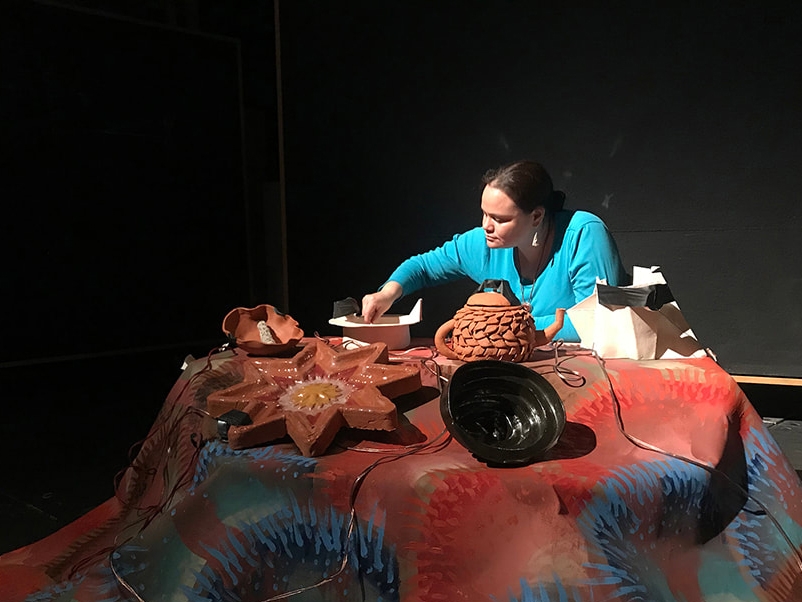The materials used for creating this instrument were:
PCB (printed circuit board) x 1
4 pin connector x 1
one push pin x 1
copper foil tape (or any kind of conductive tape)
Graphite pencil (4B used in experiment) x 1
Speaker (additional power lines needed if not attached) x 1
EVA foam cube (or anything that is enough to hold all of the materials attached to the pencil with a hole in the center) x 1
CR2032 3 Volt Lithium Coin Cell Battery x 1
Black tap wires x 2
Red tap wires x 2
Wire end caps x 2
double-sided tape
The instrument can make sound in two different ways, either by itself independently or while drawing:
Placing one finger on top of the copper tape and other at the tip of the pencil
Placing one finger on graphite drawing on paper and other on top of the copper tape
Although the outcome did not come out as the best quality I wanted it to be, and the instrument is hard to control since the pitch it produced varies on the sharpness and the smoothness of the carved pencil. Of course, the quality of its sound is far away from modern-day advanced audio technology and its sound is more closer to those of the early radio. Nevertheless, indeed, the pitches it produces are horrific and might sound unpleasant to certain people.

Responses